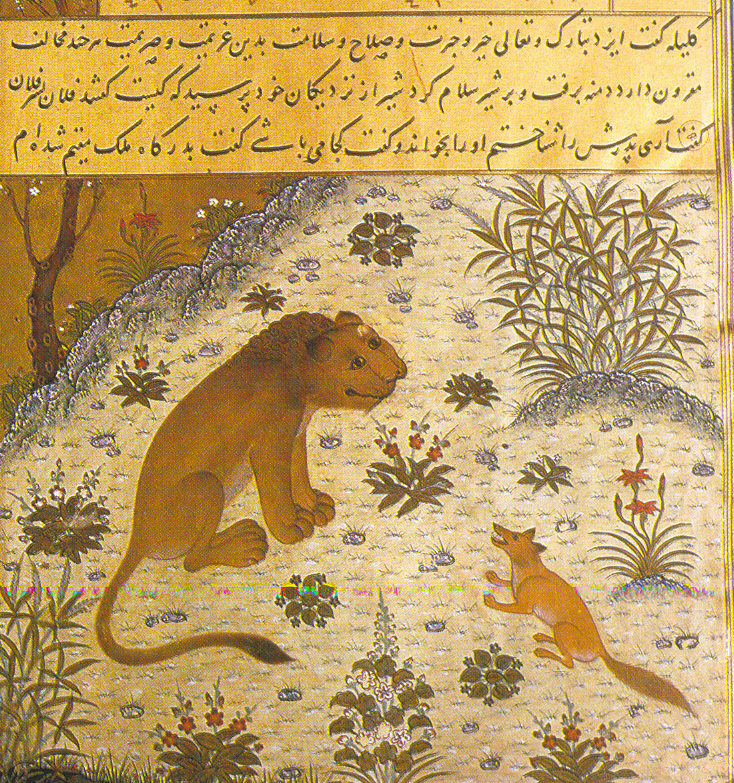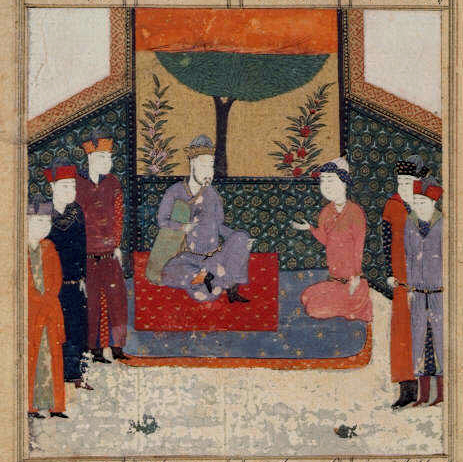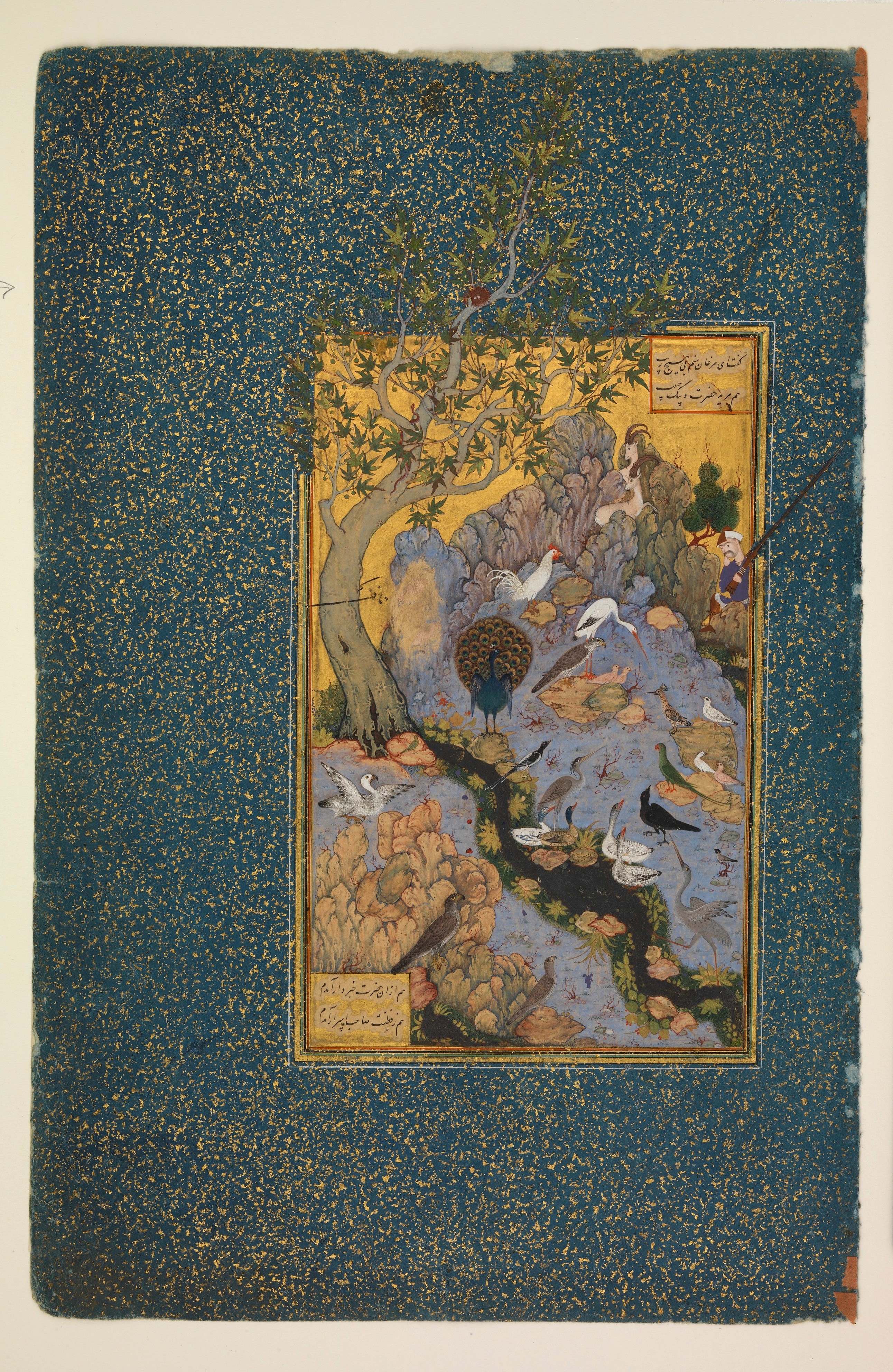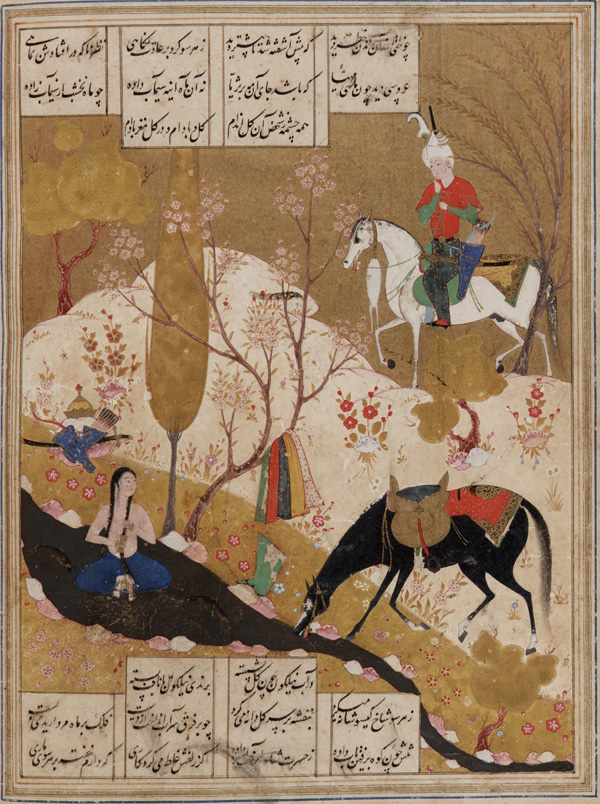|
Sana'i
Hakim Abul-Majd Majdūd ibn Ādam Sanā'ī Ghaznavi (), more commonly known as Sanai, was a poet from Ghazni. He lived his life in the Ghaznavid Empire which is now located in Afghanistan (At that time, Ghazni was considered part of the cultural and political territory of Iran And a region called Afghanistan was separated from Iran in the Treaty of Paris after the Iran-British wars in the 19th century, and before that, there was no territory called Afghanistan in history But now his birthplace and death are in Afghanistan. ) . He was born in 1080 and died between 1131 and 1141. Life Sanai was a Sunni Muslim, Edward G. Browne, ''A Literary History of Persia from the Earliest Times Until Firdawsh'', 543 pp., Adamant Media Corporation, 2002, , (see p.437) connected with the court of the Ghaznavid Bahram-shah who ruled 1117 – 1157. Works He wrote an enormous quantity of mystical verse, of which ''The Walled Garden of Truth'' or ''The Hadiqat al Haqiqa'' () is his master work ... [...More Info...] [...Related Items...] OR: [Wikipedia] [Google] [Baidu] |
Persian Literature
Persian literature comprises oral compositions and written texts in the Persian language and is one of the world's oldest literatures. It spans over two-and-a-half millennia. Its sources have been within Greater Iran including present-day Iran, Iraq, Afghanistan, Pakistan, the Caucasus, and Turkey, regions of Central Asia (such as Tajikistan), South Asia and the Balkans where the Persian language has historically been either the native or official language. For example, Rumi, one of the best-loved Persian poets, born in Balkh (in modern-day Afghanistan) or Wakhsh (in modern-day Tajikistan), wrote in Persian and lived in Konya (in modern-day Turkey), at that time the capital of the Seljuks in Anatolia. The Ghaznavids conquered large territories in Central and South Asia and adopted Persian as their court language. There is thus Persian literature from Iran, Mesopotamia, Azerbaijan, the wider Caucasus, Turkey, Pakistan, Bangladesh, India, Tajikistan and other parts of Cent ... [...More Info...] [...Related Items...] OR: [Wikipedia] [Google] [Baidu] |
Attar Of Nishapur
Faridoddin Abu Hamed Mohammad Attar Nishapuri ( – c. 1221; ), better known by his pen-names Faridoddin () and ʿAttar of Nishapur (, Attar means apothecary), was a poet, theoretician of Sufism, and hagiographer from Nishapur who had an immense and lasting influence on Persian poetry and Sufism. He wrote a collection of lyrical poems and number of long poems in the philosophical tradition of Islamic mysticism, as well as a prose work with biographies and sayings of famous Muslim mystics. '' The Conference of the Birds'', '' Book of the Divine'', and'' Memorial of the Saints'' are among his best known works. Biography Information about Attar's life is scarce and has been mythologised over the centuries. However, Attar was born to a PersianRitter, H. (1986), “Attar”, Encyclopaedia of Islam, New Ed., vol. 1: 751-755. Excerpt: "ATTAR, FARID AL-DIN MUHAMMAD B. IBRAHIM.Persian mystical poet.Farīd al-Dīn ʿAṭṭār, in Encyclopædia Britannica, online edition - accessed Dec ... [...More Info...] [...Related Items...] OR: [Wikipedia] [Google] [Baidu] |
Hadiqat Al Haqiqa
The Mathnawi (poetic form), mathnawi ''Hadiqat al-Haqiqa va Shari'at al-Tariqa'' () or ''Elahi-Nameh'' () is an early Sufi book of poetry written in the Persian language, composed by Sanai, Sanai Ghaznavi, with an Irfan theme. Sanai started composing it in the year 1130 AD (524 AH) and finished it in the year 1131 AD (525 AH). The book has ten thousand verses in ten chapters; The subjects of this book, in addition to praising Allah, Muhammad, the Last Prophet of Islam, Ahl al-Bayt, his family and Sahabah, companions, are about intellect, knowledge, wisdom and love. The manuscripts of ''Hadiqat al-Haqiqa'' have been corrected and republished by Mohammad Taghi Modarres Razavi in 1949. Another correction has been published by Mohammad Jafar Yahaghi and Mehdi Zarghani in two volumes in October 2018. Its validity Compared to other valuable works of Sanai such as his Ghazal, sonnets and Qasida, odes, ''Hadiqat al-Haqiqa'' has been the most ambitio ... [...More Info...] [...Related Items...] OR: [Wikipedia] [Google] [Baidu] |
Attar Neyshapuri
Faridoddin Abu Hamed Mohammad Attar Nishapuri ( – c. 1221; ), better known by his pen-names Faridoddin () and ʿAttar of Nishapur (, Attar means apothecary), was a poet, theoretician of Sufism, and hagiographer from Nishapur who had an immense and lasting influence on Persian poetry and Sufism. He wrote a collection of lyrical poems and number of long poems in the philosophical tradition of Islamic mysticism, as well as a prose work with biographies and sayings of famous Muslim mystics. '' The Conference of the Birds'', '' Book of the Divine'', and'' Memorial of the Saints'' are among his best known works. Biography Information about Attar's life is scarce and has been mythologised over the centuries. However, Attar was born to a PersianRitter, H. (1986), “Attar”, Encyclopaedia of Islam, New Ed., vol. 1: 751-755. Excerpt: "ATTAR, FARID AL-DIN MUHAMMAD B. IBRAHIM.Persian mystical poet.Farīd al-Dīn ʿAṭṭār, in Encyclopædia Britannica, online edition - accessed Dec ... [...More Info...] [...Related Items...] OR: [Wikipedia] [Google] [Baidu] |
Rumi
Jalāl al-Dīn Muḥammad Rūmī (), or simply Rumi (30 September 1207 – 17 December 1273), was a 13th-century poet, Hanafi '' faqih'' (jurist), Maturidi theologian (''mutakallim''), and Sufi mystic born during the Khwarazmian Empire. Rumi's works were written mostly in Persian, but occasionally he also used Turkish, Arabic and Greek in his verse. His ''Masnavi'' (''Mathnawi''), composed in Konya, is considered one of the greatest poems of the Persian language.C.E. Bosworth, "Turkmen Expansion towards the west" in UNESCO History of Humanity, Volume IV, titled "From the Seventh to the Sixteenth Century", UNESCO Publishing / Routledge, p. 391: "While the Arabic language retained its primacy in such spheres as law, theology and science, the culture of the Seljuk court and secular literature within the sultanate became largely Persianized; this is seen in the early adoption of Persian epic names by the Seljuk rulers (Qubād, Kay Khusraw and so on) and in the use of Pers ... [...More Info...] [...Related Items...] OR: [Wikipedia] [Google] [Baidu] |
Guillermo Del Toro
Guillermo del Toro Gómez (; born 9 October 1964) is a Mexican filmmaker, author, and artist. His work has been characterized by a strong connection to fairy tales, Gothic fiction, gothicism and horror fiction, horror often blending the genres, with an effort to infuse visual or poetic beauty in the grotesque. He has had a lifelong fascination with monsters, which he considers symbols of great power. Known for pioneering dark fantasy in the film industry and for his use of insectile and religious imagery, his themes of Catholic Church, Catholicism, and celebrating imperfection, underworld motifs, practical special effects, and dominant amber lighting. Throughout his career, del Toro has shifted between Spanish-language films—such as ''Cronos (film), Cronos'' (1993), ''The Devil's Backbone'' (2001), and ''Pan's Labyrinth'' (2006)—and English-language films, including ''Mimic (film), Mimic'' (1997), ''Blade II'' (2002), ''Hellboy (2004 film), Hellboy'' (2004) and its sequel ' ... [...More Info...] [...Related Items...] OR: [Wikipedia] [Google] [Baidu] |
The Shape Of Water
''The Shape of Water'' is a 2017 period romantic dark fantasy film directed and produced by Guillermo del Toro, who co-wrote the screenplay with Vanessa Taylor. It stars Sally Hawkins, Michael Shannon, Richard Jenkins, Doug Jones, Michael Stuhlbarg, and Octavia Spencer. Set in 1962 Baltimore, Maryland, the film follows a mute cleaner at a high-security government laboratory who falls in love with a captured humanoid amphibian creature and decides to help him escape from death at the hands of an evil colonel. Filming took place on location in Ontario, Canada, from August to November 2016. ''The Shape Of Water'' was screened as part of the main competition in the 74th Venice International Film Festival, where it premiered on August 31, 2017, and was awarded the Golden Lion. It was also screened at the 2017 Toronto International Film Festival. It began a limited release in two theaters in New York City on December 1, 2017, before expanding wide on December 22, and gross ... [...More Info...] [...Related Items...] OR: [Wikipedia] [Google] [Baidu] |
Library Of Congress
The Library of Congress (LOC) is a research library in Washington, D.C., serving as the library and research service for the United States Congress and the ''de facto'' national library of the United States. It also administers Copyright law of the United States, copyright law through the United States Copyright Office, and it houses the Congressional Research Service. Founded in 1800, the Library of Congress is the oldest Cultural policy of the United States, federal cultural institution in the United States. It is housed in three buildings on Capitol Hill, adjacent to the United States Capitol, along with the National Audio-Visual Conservation Center in Culpeper, Virginia, and additional storage facilities at Fort Meade, Fort George G. Meade and Cabin Branch in Hyattsville, Maryland. The library's functions are overseen by the librarian of Congress, and its buildings are maintained by the architect of the Capitol. The LOC is one of the List of largest libraries, largest libra ... [...More Info...] [...Related Items...] OR: [Wikipedia] [Google] [Baidu] |
Makhzan Al-Asrar
''Makhzan ol-Asrar'' or ''Makhzan al-Asrar'' () is a famous ''mathnawi'' poem by the Persian poet Nizami Ganjavi (1141–1209). It is the first of Nizami's five long poems known collectively as the '' Khamsa''. It is a didactic and philosophical work consisting of about 2,250 Persian distichs. It was completed when Nizami was forty years old, and since then it has been considered one of the most important poetic and written works in Persian literature. Plot The main purpose of the book ''Makhzan ol-Asrar'' is to invite people to self-knowledge, theology and choosing good habits and behavior. The poem begins with the traditional invocation of the name of God (''basmala''): After this, the author points to one of the main principles of mysticism and Sufism: the unity of God's existence and his obligatory existence. ''Makhzan ol-Asrar'' is full of mystical points and advice that are presented to the audience in the form of lyrical stories. According to scholar Hamidreza Sh ... [...More Info...] [...Related Items...] OR: [Wikipedia] [Google] [Baidu] |
Nizami Ganjavi
Nizami Ganjavi (; c. 1141 – 1209), Nizami Ganje'i, Nizami, or Nezāmi, whose formal name was Jamal ad-Dīn Abū Muḥammad Ilyās ibn-Yūsuf ibn-Zakkī,Mo'in, Muhammad(2006), "Tahlil-i Haft Paykar-i Nezami", Tehran.: p. 2: Some commentators have mentioned his name as “Ilyas the son of Yusuf the son of Zakki the son of Mua’yyad” while others have mentioned that Mu’ayyad is a title for Zakki. Mohammad Moin, rejects the first interpretation claiming that if it were to mean 'Zakki son of Muayyad' it should have been read as 'Zakki i Muayyad' where izafe (-i-) shows the son-parent relationship but here it is 'Zakki Muayyad' and Zakki ends in silence/stop and there is no izafe (-i-). Some may argue that izafe is dropped due to meter constraints but dropping parenthood izafe is very strange and rare. So it is possible that Muayyad was a sobriquet for Zaki or part of his name (like Muayyad al-Din Zaki). This is supported by the fact that later biographers also state Yusuf was ... [...More Info...] [...Related Items...] OR: [Wikipedia] [Google] [Baidu] |
John Stephenson (zoologist)
John Stephenson Order of the Indian Empire, CIE Fellow of the Royal Society, FRS Fellow of the Royal Society of Edinburgh, FRSE FRCS (6 February 1871, in Padiham, Lancashire – 2 February 1933, in London) was a surgeon and zoologist. He was a leading expert on the earthworms of the Indian subcontinent and served as editor of the ''The Fauna of British India, Including Ceylon and Burma, Fauna of British India'' series from 1927. Knowledgeable in Persian, Hindustani and some Arabic, he was also an orientalist scholar and translated several works from Persian to English. Life Stephenson was born in Padiham and was education at Burnley Grammar School, matriculated from University of Manchester#History, Owen's College, Manchester and graduated there with a B.Sc. (Lond.) in 1890 and M.B., B.Chir. (Manc.) in 1893. Stephenson was a house physician from 1893 to 1894 at the Manchester Royal Infirmary and then in 1894 at the Royal Chest Hospital, Royal Hospital for Diseases of the Chest, L ... [...More Info...] [...Related Items...] OR: [Wikipedia] [Google] [Baidu] |








